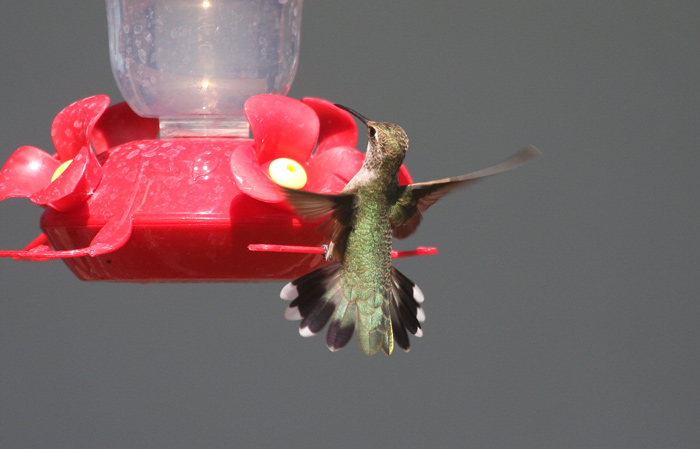Comments:
Well this month we are working with a
hummingbird. I have to admit that I chose to do an immature/female
hummingbird because I am in need of some serious work in that
department. It is so easy to just ignore the female or juvenile
hummers at feeders because males are so much more beautiful and easy
to ID. But if a rare hummer ever shows up there is a high probability
that it will be a juvenile or female and with a bit of work they can
be identified as well.
Anyway, on to our quiz bird. So this bird is
obviously a hummingbird. Since doesn’t have a gorget (throat patch)
and the overall drab color we know it is either a female or a juvenile
male.
Bill shape & length varies between the species,
but with our bird facing away it is hard to judge the bill. We have a
great look at the tail, so let’s start there. Broad-tailed and Rufus
always have some reddish-brown in the tail, which our bird does not.
Calliope Hummingbird is possible, but there are a few small
differences in the tail. The center 2 feathers should appear shorter
and also should be a bit spade- shape, where on our bird they appear
rounded. Immature Calliopes also should show a bit of cinnamon at the
base of the tail feathers.
Our bird has white tips on all except the center
tail feathers. Comparing all the tails on all immature and female
hummingbirds that occur in Utah, only 1 has white on 4 feathers per
side (R2-R5, 1 being the innermost and 5 the outer), the
Black-chinned. More specifically, the immature female Black-chinned.
Immature female Ruby-throated may have a bit of white on R2 as well,
but normally less than shown here. Also there are some shape
differences in the tail feathers as well.
All of this info is found in the Peterson Field
Guides Hummingbirds of North America.
15 people correctly identified this bird as a
Black-chinned Hummingbird. It was photographed in August in Elk
Ridge, Utah.
|

